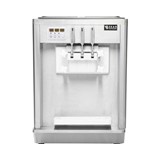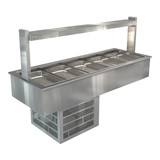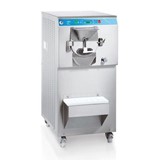Key takeaways
- Cool room prices typically range from $6,000 to $15,000 for standard modular units, while freezer rooms with heavy-duty insulation and lower temperature control start from $8,000 to over $25,000+, depending on size, materials, and features.
- Running costs can range from $2 to $8 per day per cubic metre of space, depending on temperature settings, insulation quality, and compressor efficiency.
- Government compliance: All units must meet Australian Standards AS/NZS 5149 for refrigeration systems and food safety codes under the Food Standards Australia New Zealand (FSANZ).
- Most popular room types include modular, built-on-site, portable, and customised commercial cold rooms, with polyurethane panel insulation (75–150mm) being the most energy-efficient.
- Financing options: Leasing and equipment financing are commonly available from banks and brokers, with interest rates from 6.5%–11%, depending on the term and business profile.
- Warranties generally cover 12 to 60 months, with compressor and parts warranties often listed separately.
Introduction
Whether you run a restaurant, butcher, medical facility or food manufacturing business, a reliable cool room or freezer room is critical to your operations. These temperature-controlled storage systems preserve product quality, ensure food safety, and help your business stay compliant. In this guide, we’ll break down the types, costs, compliance requirements, and key buyer considerations—so you can make an informed investment in Australia’s competitive market.
Types of cool rooms and freezer rooms
Cool and freezer rooms can be categorised based on structure, mobility, and temperature capability.
Based on temperature control:
- Cool rooms: Operate between +1°C to +10°C, ideal for perishables and drinks.
- Freezer rooms: Maintain –18°C to –25°C, used for frozen meat, seafood, and long-term storage.
Based on structure:
- Modular rooms: Pre-fabricated panels, fast installation, popular for hospitality and retail.
- Built-on-site rooms: Custom dimensions, suited for large or unusual spaces.
- Portable cool rooms: Trailer-mounted, used by caterers or event managers.
- Hybrid systems: Combine both cool and freezer compartments within a single installation.
Insulation types:
- Polyurethane foam (PUF): Most common and energy-efficient.
- Expanded polystyrene (EPS): Budget-friendly but slightly less efficient.
Price guide
Cool room and freezer room prices in Australia vary depending on size, insulation, features, and whether the unit is modular, portable, or custom-built. Here's what you can expect:
- Small modular cool rooms (2m x 2m) generally cost between $6,000 and $8,000. These are ideal for small cafes, florists, or compact commercial kitchens.
- Medium-sized freezer rooms (3m x 3m) typically range from $10,000 to $16,000. They're suitable for small-to-medium restaurants, butcher shops, and food distributors.
- Large commercial cool rooms (6m x 4m or larger) are priced from $15,000 to over $25,000, depending on features and build quality. These are often found in food manufacturing plants or larger retail settings.
- Portable cool room trailers, often used by caterers or event-based businesses, cost around $12,000 to $20,000. These units provide mobility and flexibility.
- Custom-built freezer rooms, designed to suit specific business needs or unusual spaces, start from $20,000 and can exceed $40,000, especially for large-scale commercial applications with high-performance requirements.
Operation and energy efficiency
To maintain consistent internal temperatures, cool and freezer rooms use a combination of:
- Insulated panels: Typically 75mm to 150mm thick.
- Refrigeration systems: Condensing units and evaporators sized to the room.
- Digital thermostats: Allow for precise temperature control and monitoring.
- Ventilation and lighting: LED lighting and vent fans improve visibility and airflow with minimal heat gain.
Energy-saving tips:
- Install auto-closing doors and strip curtains.
- Invest in high-efficiency compressors (look for units rated with MEPS compliance).
- Maintain seals and regularly defrost to avoid ice build-up.
Maintenance and parts
Regular maintenance tasks:
- Monthly: Check door seals, clear condensate drains, inspect temperature settings.
- Quarterly: Clean evaporator and condenser coils, check refrigerant pressure.
- Annually: Full system check by a licensed refrigeration technician.
Common parts needing replacement:
- Door seals ($50–$150)
- Thermostats ($100–$300)
- Fans and motors ($200–$500)
- Compressors ($1,000–$3,500)
Financing your investment
Many Australian suppliers offer financing through partnerships with brokers and equipment lenders.
Financing options:
- Equipment finance leases
- Chattel mortgage
- Operating lease
- Rent-to-own
Loan snapshot:
- Rates: 6.5% – 11%
- Terms: 2–7 years
- Deposit: Typically 10–20%
- Tax benefits: Instant asset write-off may apply (consult your accountant)
Warranties and after-sales support
Warranties vary by brand and supplier. Always clarify:
- Length of warranty: Most systems come with 12–36 months warranty.
- Compressor coverage: Often longer—up to 5 years.
- Parts and labour: May have separate conditions.
Look for suppliers offering:
- 24/7 support
- Onsite servicing
- Australian-based parts inventory
Compliance and certifications
In Australia, cold and freezer room installations must meet strict standards:
Key standards:
- AS/NZS 5149: For refrigeration system design and safety.
- Food Standards Code – Chapter 3: Requires appropriate food storage temperatures.
- NCC (National Construction Code): For structural compliance if installing a built-on-site room.
- EPA and local council regulations: Particularly for noise levels, refrigerants, and placement.
Installation and site requirements
Proper installation is key to getting the most from your cool room or freezer room. Here’s what to consider before buying:
Electrical and power setup
- Most units need a dedicated 15–20 amp circuit, with three-phase power required for larger models.
- A licensed electrician is essential for safe and compliant setup.
Flooring and structure
- Ensure your floor can handle the weight of the unit and stored goods. A reinforced concrete slab is recommended, especially for freezer rooms.
Drainage and ventilation
- Units produce condensation, so a drainage point with the right fall is crucial.
- Ventilation is needed to manage heat from the compressor.
Access and clearance
- Allow 300–600mm clearance around the unit for maintenance.
- Make sure there’s sufficient access for stock handling (trolleys, forklifts) and delivery.
Installation time
- Modular units can be installed in 1–2 days.
- Custom builds may take up to 2 weeks depending on complexity.
Energy efficiency and running costs
Cool rooms and freezer rooms can be energy-intensive. Choosing energy-efficient features can save you thousands long-term.
Average energy usage
- A small cool room uses around 4–6 kWh/day (~$1.50–$2.25/day).
- A large freezer room may use 20–30+ kWh/day (~$7–$11/day).
Features that cut running costs
- High R-value insulation (R2.5+ for cool rooms, R3.5+ for freezers)
- LED lighting and self-closing doors
- Inverter compressors that adjust power output
- Zoned temperature control to avoid overcooling
Solar and rebates
- Pairing with solar power can cut energy bills significantly.
- Check for programs like the NSW Energy Savings Scheme or VIC VEET, which offer incentives for efficient systems.
Common buyer questions
1. How much space do I need for a cool or freezer room?
It depends on storage volume. As a guide:
- 2m x 2m cool room stores approx. 2–3 standard pallets.
- 3m x 3m freezer room can store up to 5 pallets.
2. Can I install it outdoors?
Yes, but ensure:
- It’s weatherproofed with an external-rated compressor.
- There’s adequate drainage and ventilation.
- It complies with council zoning rules.
3. How long does installation take?
- Modular rooms: 1–3 days.
- Built-on-site: Up to 2 weeks depending on complexity.
- Portable units are ready to use immediately.
4. How do I know if I need a cool room or a freezer room?
- Choose a cool room for fresh produce, dairy, flowers, and drinks.
- Opt for a freezer room for meats, seafood, ice cream, or anything needing long-term preservation.
Final tips for buyers
- Measure twice: Know your internal storage needs, but also check access points and floor strength.
- Future-proof: Always plan for slightly more capacity than you need now.
- Compare warranties and energy ratings before buying.
- Ask for a compliance certificate post-installation to protect your business.
Conclusion
Investing in a cool room or freezer room is a key decision for your business. By understanding your needs, ensuring proper installation, and choosing energy-efficient features, you can maximise performance and reduce ongoing costs. Always consider installation, maintenance, energy use, and compliance to make the most informed choice.
Whether it’s a small modular unit or a custom build, investing time in research will pay off long-term. With the right equipment, you can improve efficiency and sustainability, setting your business up for success.















-160x160-state_article-rel-cat.png)









